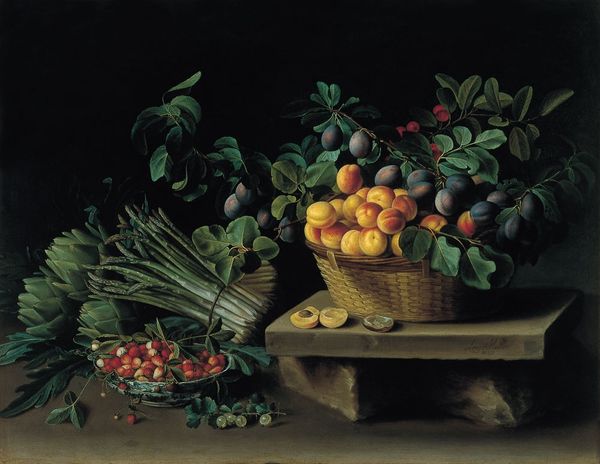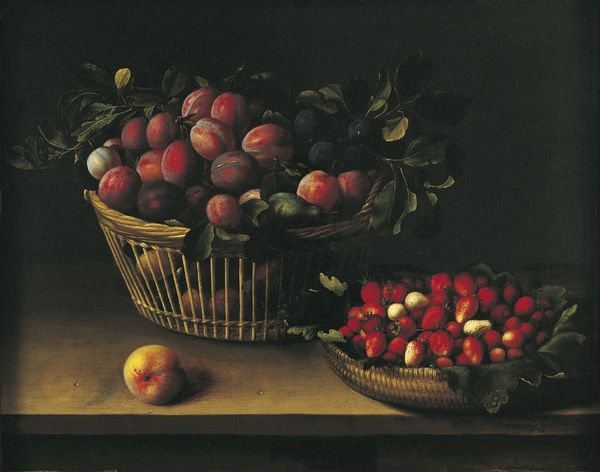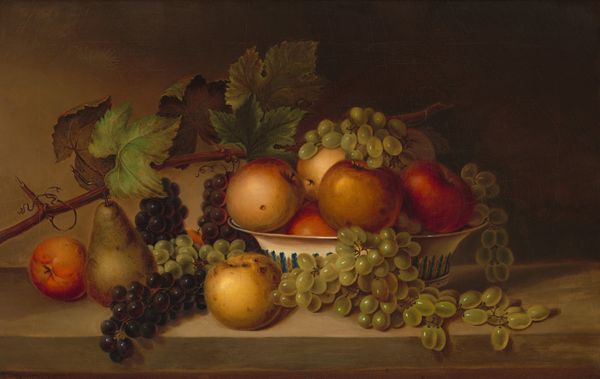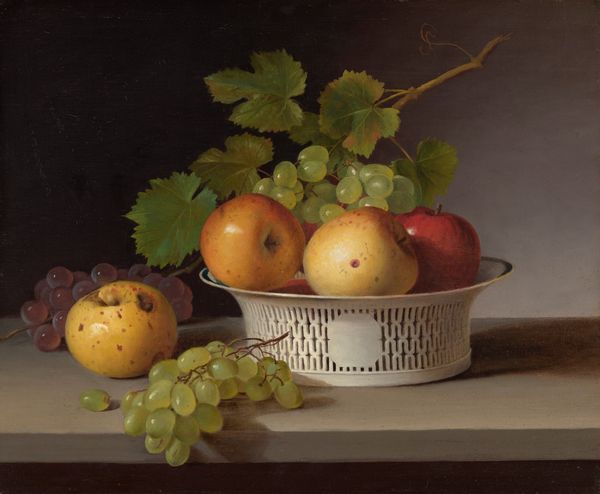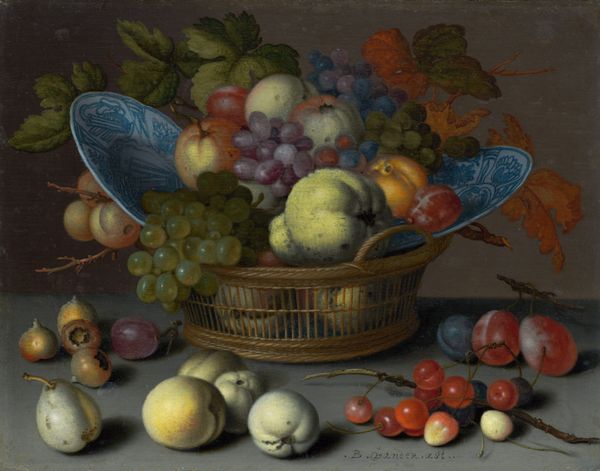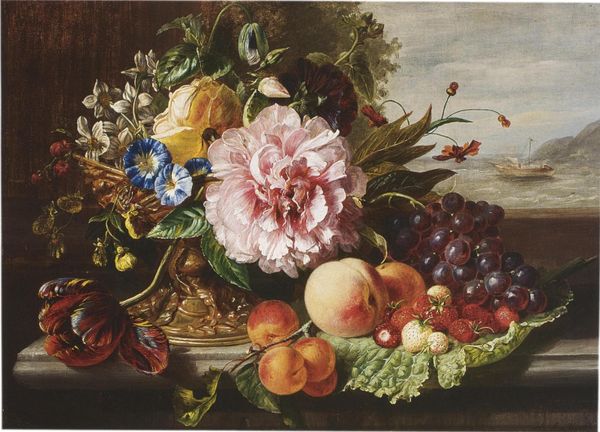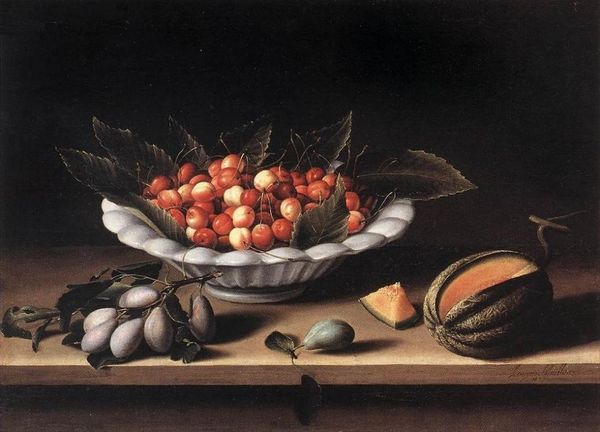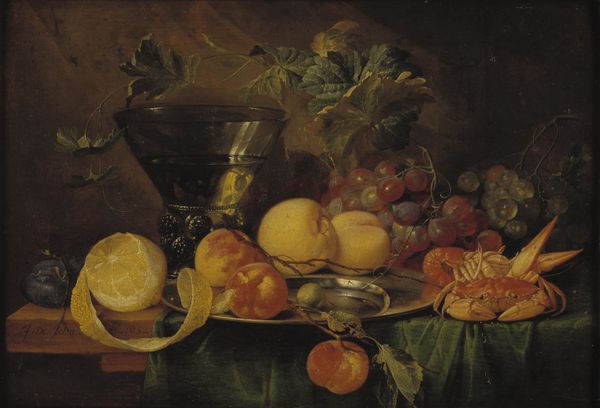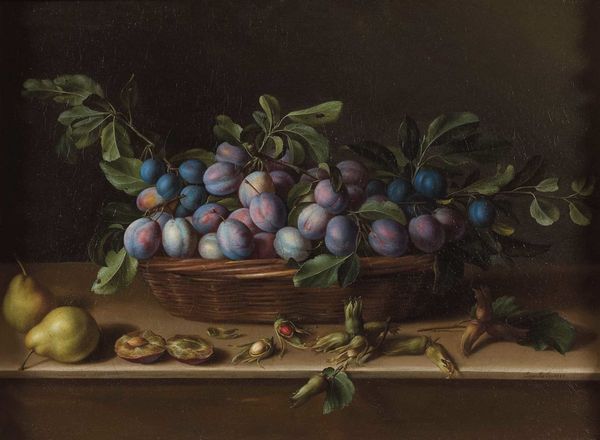
Still Life with a Basket of Fruit and a Bunch of Asparagus 1630
0:00
0:00
painting, oil-paint
#
baroque
#
painting
#
oil-paint
#
fruit
#
genre-painting
Dimensions: 53.3 x 71.3 cm
Copyright: Public domain
What is your favourite fruit? 🍎 The genre of still life is commonly associated with depictions of food, typically fruit, alongside flowers and other inanimate objects. Still life painting emerged as a standalone subject during the sixteenth and seventeenth centuries, and quickly flourished across Europe. 🍇 The talented French artist Louise Moillon (1610-1696) painted this still life around 1630, aged just 20. It depicts a weave basket stuffed with fruit, sitting atop a plain wooden table. A hearty bunch of asparagus, tied with brown string, is arranged to the right of the basket. An open pod of peas also lies on the table. 🧺 The fruit is arranged to emphasise abundance. We see a wealth of plump apples, peaches, grapes, gooseberries, and glistening cherries. The addition of natural green foliage indicates the freshness of the fruit, and provides depth to the image. Alongside the scattered berries below the basket, there are a few beads of water which trickle down the edge of the table. Could this fruit have just been gathered from outside? 🍒 Here, Moillon has selected fruits which would have been commonplace in seventeenth-century France. This is unlike the trend for exotic and non-native fruits, which were often included in still life paintings as symbols of wealth and trade connections. The artist has also used a simple composition – her background especially lacks any detail. Despite this lack of extravagance, the painting communicates a sense of plenty and generosity. 🌲 Still life ranked at the bottom of the hierarchy of genres proposed by the French Academie. Still life was perceived as less valuable and important than prestigious genres such as history painting and portraiture. Do you think these values have changed since the seventeenth century? 🎨 Louise Moillon is known for her realistic yet elegant still life scenes. Her painting was popular with the ordinary viewer and collectors alike. Even King Charles I of England collected her painting! Working at a time when professional schooling for women artists was limited, Moillon trained with her stepfather. Most of her paintings were completed in the 1630s, prior to her marriage in 1640. Why might Moillon have stopped painting after she was married? 🤔👇 Editor: Lucy Jude Grantham
Comments
No comments
Be the first to comment and join the conversation on the ultimate creative platform.
